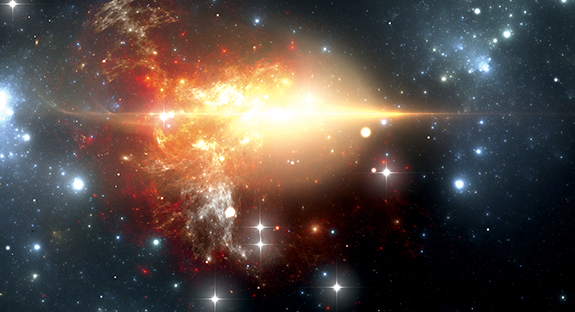Carles Badenes, International Astronomers Find Way to Analyze Supernova Remnants
An international team of astronomers, including the University of Pittsburgh’s Carlos Badenes, used data from the Japan-led Suzaku X-ray observatory to develop a powerful technique for analyzing supernova remnants, the expanding clouds of debris left behind when stars explode. The method gives scientists a way to quickly identify the type of explosion and offers insights into the environment surrounding the star before its destruction.
international team of astronomers, including the University of Pittsburgh’s Carlos Badenes, used data from the Japan-led Suzaku X-ray observatory to develop a powerful technique for analyzing supernova remnants, the expanding clouds of debris left behind when stars explode. The method gives scientists a way to quickly identify the type of explosion and offers insights into the environment surrounding the star before its destruction.
“One of our major challenges in studying supernova remnants is that as they expand into space and mix with interstellar gas, crucial information about the explosion becomes increasingly dilute and difficult to measure,” says Badenes, a Pitt assistant professor of physics and astronomy. “Sometimes, even the most fundamental property of a supernova remnant—whether it came from a type Ia or a core-collapse explosion—can be controversial.”
Supernovae fall into two broad classes based on the triggering event. Those called core-collapse supernovae occur in stars born with more than eight times the sun’s mass when they undergo a terminal energy crisis, collapse under their own weight, and explode.
The other variety, type Ia supernovae, involves the total destruction of a white dwarf, a compact remnant produced by stars like the sun.
Type Ia supernovae are so bright they can be detected across the observable universe. Moreover, each of these stellar bombs releases a very similar amount of energy, which provides a valuable check on other measures of their distances. For example, studies of type Ia supernovae led astronomers to discover that the expansion of our universe is accelerating.
Astronomers estimate that a supernova occurs once or twice a century in our home galaxy, the Milky Way. Each time, a blast wave and a shell of hot stellar debris expands rapidly away from the detonation, creating a supernova remnant that can be detected for tens of thousands of years. The expanding cloud slows over time as it mixes with interstellar gas and eventually becomes indistinguishable from it.
The technique developed by Badenes and colleagues involves observing X-rays emitted by iron atoms in the core of supernova remnants. Even after thousands of years, these atoms remain extremely hot, stripped of most of the 26 electrons that accompany iron atoms under normal conditions on Earth. The metal is formed in the centers of the shattered stars toward the end of their energy-producing lives and in their explosive demise, which makes it a key witness to stellar death.
Remnants produced by core-collapse supernovae possess noticeably higher iron temperatures than type Ia supernovae, with a distinct dividing line at a peak energy of about 6,550 electron volts. (For comparison, the energy of visible light is roughly between 2 and 3 electron volts.) Hotter than this, and the remnant was formed by a core-collapse supernova; cooler, and it was made by a type Ia explosion. The technique provides a clear and rapid means of classifying supernova remnants.
The work was published in the April 20 edition of The Astrophysical Journal.
Other Stories From This Issue
On the Freedom Road

Follow a group of Pitt students on the Returning to the Roots of Civil Rights bus tour, a nine-day, 2,300-mile journey crisscrossing five states.
Day 1: The Awakening
Day 2: Deep Impressions
Day 3: Music, Montgomery, and More
Day 4: Looking Back, Looking Forward
Day 5: Learning to Remember
Day 6: The Mountaintop
Day 7: Slavery and Beyond
Day 8: Lessons to Bring Home
Day 9: Final Lessons

